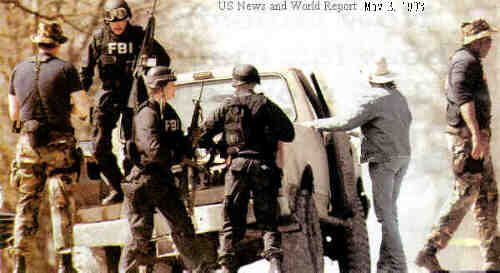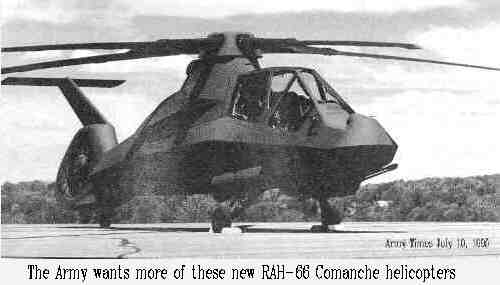The spirit of the American military has changed since the days of the World War II movies.
In those days the US military was a citizen army of draftees and volunteers protecting the shores of
the US and its allies after a clear act of aggression by a foreign country.
These days the military has become a publicly funded career option for professional soldiers and
soldier bureaucrats. The military no longer confines itself to the defense of the US. It
has taken an active role in the internal struggles of other countries, often working closely with
the Central Intelligence Agency to shore up military juntas and autocratic regimes against the
citizens of those countries.
These actions are largely covert and illegal and often aimed at
civilians. Killing Hope by William Blum
documents 55 such military-CIA interventions in foreign countries since the Second World War.
So-called "surgical strike forces" are sent on hundreds of missions a week throughout the world,
without declaration of war. According to The Tampa Tribune,
March 1, 1996, the Special Operations Command, made up of covert operations units in the four
services, works closely with the CIA and performs 280 missions a week. These are the "black
bag" operations.
At home, the military is expanding its role in the post-Cold War era. "Much of the
military's intrusion has been accomplished without public notice," says Sam Smith, writing in The
Progressive Review On-Line Report, March, 1996, in an article
entitled Mission Creep: Militarizing
America (cached).
The Progressive Review cites the appointment of General Brian McCaffrey, former commander of the
US Southern Command (Southcom), as drug czar. Southcom provided military backup for US Latin
American policy — a policy long linked with support of dictatorships, suppression of dissidents,
human rights abuses, and death squads.
Like all vested interest groups, the US military is seeking to expand its employment
opportunities. The way to do this is to create new markets for services. One such
suggested market for use of soldiers was social services work (The
Washington Times, May 10, 1995).
A more likely avenue of employment for the US military, however, is warfare against civilians, in
the manner of the Latin American juntas. Drug Czar McCaffrey's background in Latin America has
doubtlessly prepared him well to play an important role in the war on civilians here in the US.
Commandos used in actions against civilians are recruited by the Special Operations
Command. The United States Air Force Statistical Digest for fiscal year 1994 (extract below)
shows that squadrons of aircraft devoted to Special Operations rose from 11 in FY1991 to 16 in
FY1994, while conventional bomber squadrons shrank from 18 in FY1991 to 12 in 1994.
| US Air Force Squadrons |
FY91 |
FY94 |
| Bomber |
18 |
12 |
| Fighter |
70 |
53 |
| Special Operations Forces |
11 |
16 |
The US Air Force is recommending Special Operations aircraft design and development. The
Air Force's Scientific Advisory Board says the "requirements for special operations will
dramatically increase in the future," and that "the need for flexible covert intervention in both
developed and undeveloped nations around the world appears certain." (Aerospace Daily,
June 19, 1996.)
Contemporary US soldiers train for civilian warfare on Military Operations Urban Training
facilities (MOUT). A MOUT facility is a full scale mock-up of a modern small town, used to
train soldiers to shoot and kill civilians. In one army base in Camp Lejeune, the Marines have
constructed a 31-building town with a city hall, a church, a hotel, a business district, and
condominiums. MOUT facilities sometimes have several hundred yards of built-in sewers to give
the soldiers practice invading and occupying civilian areas.
According to Marines Get a Taste of Urban Warfare Against 'Enemies' at Home, which
appeared in The Los Angles Times, July 11, 1995, one of the
problems confronted during MOUT training is "what to do when guerrillas are hiding behind women and
children." In these scenarios, "guerrillas" are the adult male civilians that the soldiers are
trying to kill.
In such training, everyone presumes the US soldiers care more about the women and children than
the husbands of those women and the fathers of those children ("guerrillas"). But the Waco
incident proves that presumption just is not so.
Next: The Black Army
Back: Directory of Exhibits
Up: Introduction to the War Gallery
Home: Museum Entrance
Search: Museum Text

